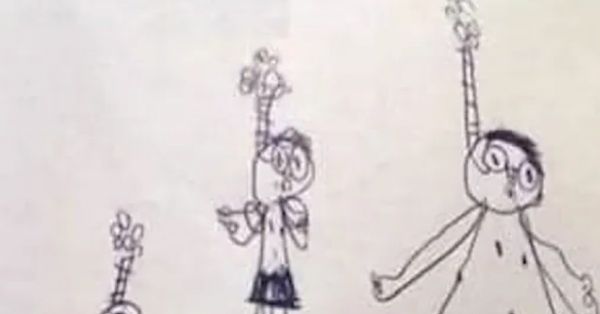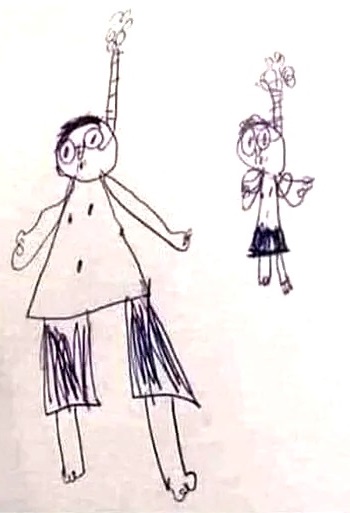
A heartwarming family vacation turned into a perplexing situation when a six-year-old’s innocent drawing was misinterpreted by his kindergarten teacher. Instead of seeing a delightful memory of snorkeling in the Bahamas, the teacher mistook the images of snorkeling gear for nooses around the family’s necks. Concerned, she called for an urgent meeting with the parents, leading to a heated debate.
The parents were taken aback by the teacher’s interpretation. To them, the drawing was a joyous representation of a special family trip. They saw the snorkeling gear as equipment and not alarming symbols. However, the teacher’s perspective raised questions about the intention behind the drawing, prompting her to act swiftly.
Upon receiving the note about the emergency meeting, the boy’s father questioned his son. The innocent response revealed that the teacher simply didn’t like his drawing. The next day, the parents attended the meeting where the teacher presented the drawing, seeking an explanation.
Online communities quickly got involved, expressing divided opinions on the matter. Criticizers believed that the teacher overreacted, calling her response “bloody hysteria.” They argued that she should have explored less alarming explanations before jumping to conclusions. For them, the drawing was nothing more than an innocent child’s representation of a vacation, and the teacher’s reaction was unnecessary.
Supporters of the teacher, however, stressed the importance of prioritizing student safety. According to them, if there was even a slight chance that a child might be in danger, it was the teacher’s duty to take action. They defended the teacher’s proactive approach, while others deemed it an overstep of boundaries.
This incident sheds light on the challenges that educators face and the delicate balance they must strike between protecting students and respecting family privacy. It reminds us of the subjectivity of artistic expression and how interpretations can vary widely based on individual perceptions. Above all, it emphasizes the necessity of open dialogue and understanding in safeguarding children’s well-being. By promoting communication and empathy, we can ensure the safety of children while respecting the richness and diversity of their experiences and expressions. Let this story be a reminder to appreciate the different perspectives that art can inspire and the importance of finding common ground for the sake of our children.






